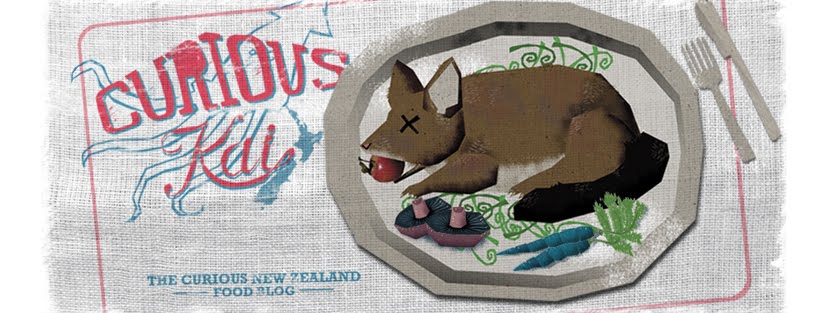
At the bottom of your typical New Zealand backyard, just past Francesco the Jack Russell's grave and the smelly old compost pile, is an oft neglected plant found in many a New Zealand back yard: the rhubarb plant. It's a sturdy thing, requiring little in the way of attention; bearing a resemblance to silverbeet, it has long crimson stalks topped with full, leafy green, leaves.
Rhubarb is ready to harvest from November here in the Southern hemisphere - don't be put off if the stalks are green; they're just as usable and edible as the red. Most people probably already know this, but it does bear repeating: the green leaves are very poisonous and should not be cooked, steeped as they are in oxalic acid.

Rhubarb's usefulness lies in its tart flavour. Typically used in desserts and puddings as a counterpoint to their sweetness, this feature makes it valuable in savoury dishes. In particular, rhubarb's sharpness contrasts nicely with the unctuous quality of cooked meats. With summer here and the accompanying prevalence of salads and cold cuts of meat, I thought a chutney would be a good way to put my rhubarb to use.
Making preserves, whether relishes, chutneys or sauces, is a great way of using up excess produce from your garden. It's also cheaper than buying it from the shops, invariably tastes better and as is often the case when making things, there's a great deal of satisfaction to be had from producing food for you and the people around you. The flavour of your product will continue to develop and even change over time, so it'll be interesting to see how this affects the rhubarb.
This is Gordon Ramsay's version of a traditional rhubarb chutney. I made this on Saturday morning; it's quite easy to do and makes about 900 grams.
Rhubarb, Apricot & Ginger Chutney
- 300 g brown sugar
- 450g rhubarb, chopped into 2cm pieces
- 350g onion, finely chopped
- 175g dried apricots
- 480ml cider vinegar
- 1 tsp ground coriander seeds
- ½ tsp allspice
- ¼ tsp mustard seeds
- 2 cloves
- 4cm piece fresh ginger, peeled and sliced
- jars & lids
During this time, sterilise your lids and jars. There are several ways to do this; run them though your dishwasher; pop them into a pot of boiling water for 10 minutes, remove and leave to air dry on a rack; you could use a sterilising agent such as that used for bottles for home brewing; or simply wash in hot, soapy water, dry with a clean tea towel and place in an oven at 150c for half an hour.
Back to the chutney. Allow to cool slightly and then remove the cloves. Using a hand-held stick blender, blitz the mixture until you achieve the texture you want. Spoon into your jars and then leave to cool completely before putting on the lids. Keep in a dark place for a couple of weeks before opening (remember, the longer you leave them, the better the flavour). Refrigerate after opening and it should keep for about a month. Unopened, it will keep for up to a year. Enjoy with cold slices of pork, mutton or beef.

Links: You can't talk about rhubarb and not put up dessert recipes. Treats from Hugh Fearnley-Whittingstall clickety
Information about growing rhubarb clickety








No comments:
Post a Comment